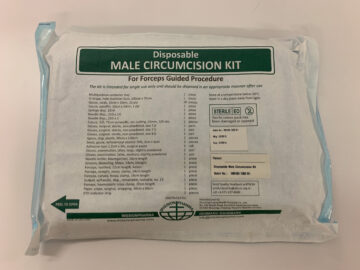Disposable Circumcision Kit
United States 2013
Since 2007, the World Health Organization (WHO) and the Joint United Nations Programme on HIV/AIDS (UNAIDS) have recommended voluntary male circumcision as a key component of HIV prevention in countries with high rates of HIV, but low rates of male circumcision. Male circumcision reduces the chance of female-to-male sexual transmission of HIV by 60%, as well as reduces the risk of other sexually transmitted infections. Disposable kits, such as this one from USAID, ensure sterile instruments in both non-hospital and hospital settings, making mobile outreach easier.
This image is in the public domain and no permission is required to use it. Please credit the National Museum of American Diplomacy as the original source, and provide a link back to the item page where possible.
Most of our items are donations, and we cannot always confirm the copyright or trademark status of photographs, prints, drawings, and other artistic works that may be depicted in these images.
Please contact us at NMAD@state.gov for any permissions or usage questions.
MLA Format
Disposable Circumcision Kit. 2013. National Museum of American Diplomacy, https://diplomacy.state.gov/items/disposable-circumcision-kit
Chicago Format
Disposable Circumcision Kit, 2013, National Museum of American Diplomacy, Washington, DC, https://diplomacy.state.gov/items/disposable-circumcision-kit
APA Format
(Disposable Circumcision Kit). 2013 [Object]. National Museum of American Diplomacy, Washington, D.C., United States. https://diplomacy.state.gov/items/disposable-circumcision-kit
